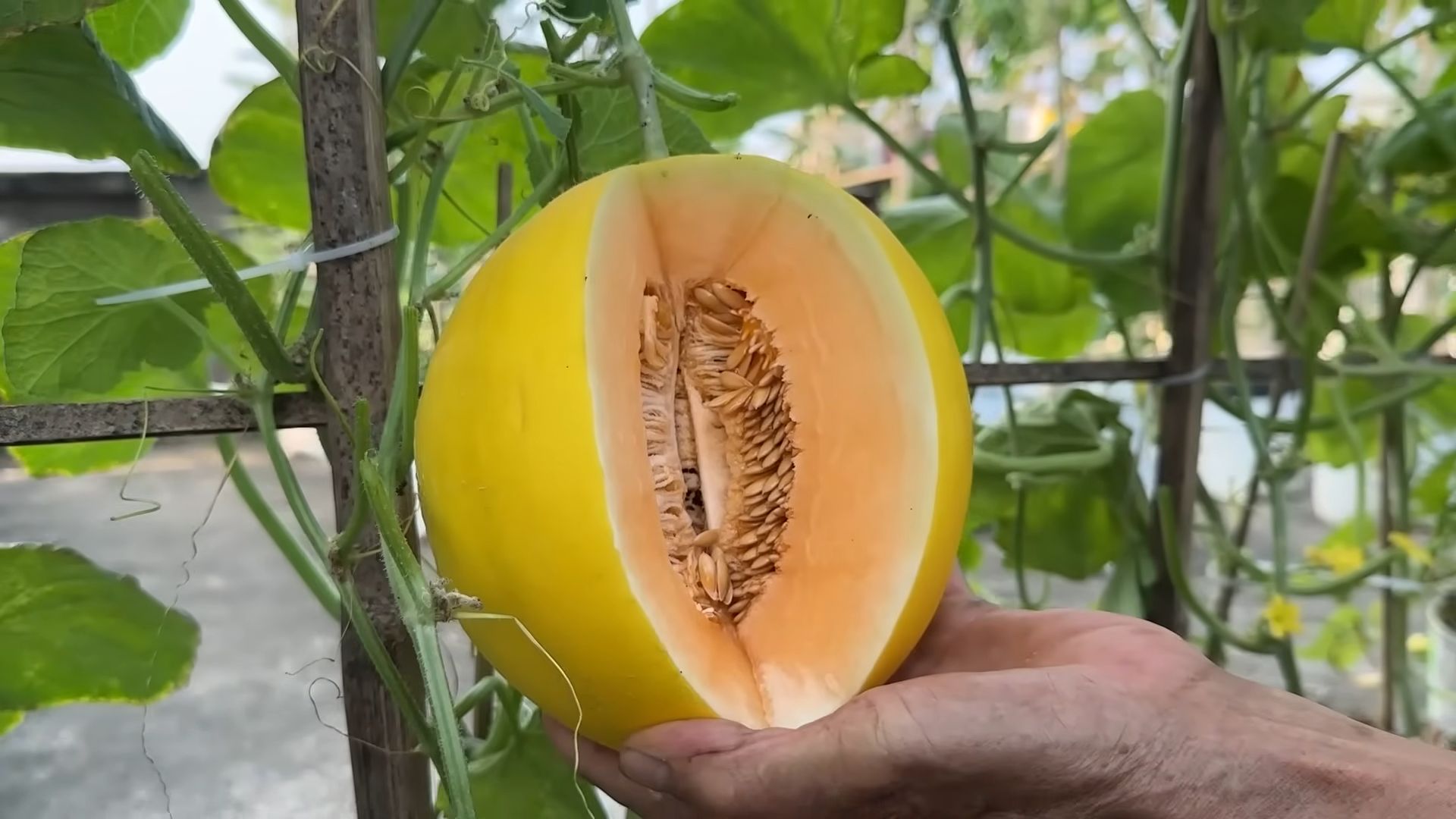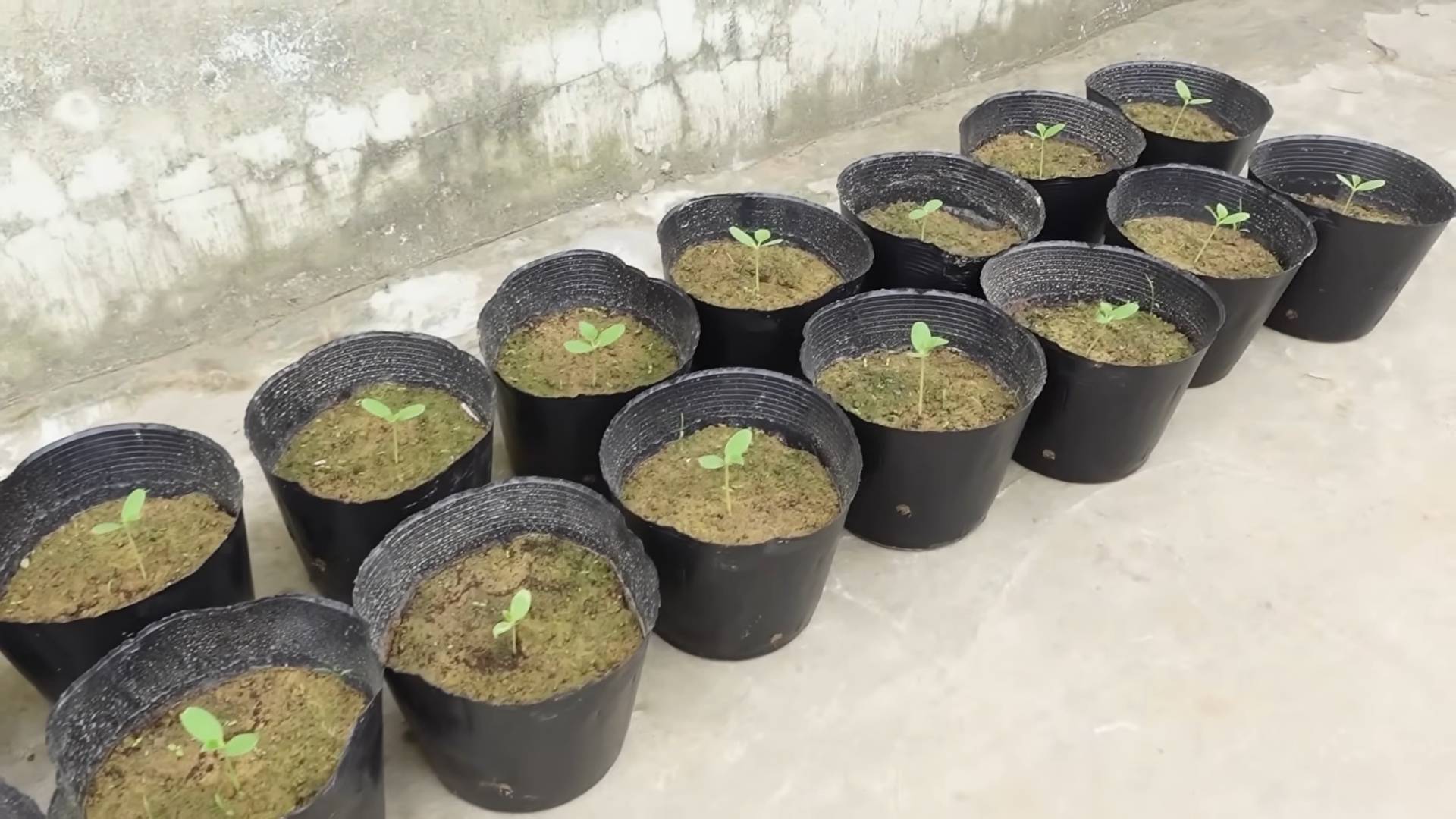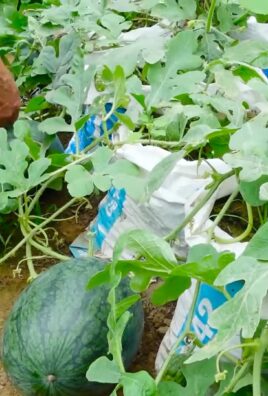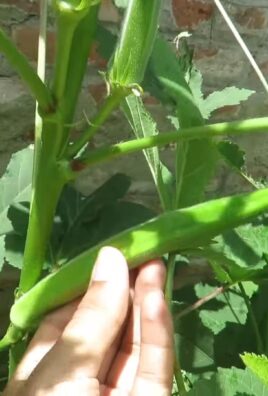Kohlrabi Growing at Home might sound intimidating, but trust me, it’s easier than you think! Have you ever walked through a farmers market and been intrigued by that alien-looking vegetable with the bulbous stem and leafy greens? That’s kohlrabi, and you can absolutely grow it yourself, even if you’re a beginner gardener. I’m here to show you how!
Kohlrabi, sometimes called a German turnip, has a fascinating history. Originating in Europe, it’s been a staple in German cuisine for centuries. It’s a cool-season crop, making it perfect for spring and fall gardens. But beyond its historical roots, why should *you* bother with kohlrabi growing at home? Well, for starters, it’s incredibly versatile in the kitchen. You can eat the bulb raw in salads, roast it like potatoes, or even stir-fry it. The leaves are also edible and taste similar to collard greens!
More importantly, growing your own kohlrabi means you get fresh, organic produce right at your fingertips. No more mystery ingredients or questionable farming practices. Plus, it’s a rewarding experience to nurture a plant from seed to table. In this article, I’ll share my favorite DIY tricks and hacks to ensure a successful kohlrabi harvest, even if you have limited space or experience. Let’s get growing!

Growing Kohlrabi: A Beginner’s Guide to This Underrated Vegetable
Kohlrabi, often called the “German turnip,” is a cool-season vegetable that’s surprisingly easy to grow at home. Don’t let its unusual appearance intimidate you! It’s packed with nutrients, has a mild, slightly sweet flavor, and can be eaten raw or cooked. I’m going to walk you through everything you need to know to successfully grow kohlrabi in your own garden, even if you’re a complete beginner.
Choosing the Right Variety
Before we get started, let’s talk about kohlrabi varieties. There are several to choose from, and the best one for you will depend on your climate and preferences.
* Early White Vienna: This is a popular, fast-maturing variety that produces pale green bulbs. It’s a great choice for early harvests.
* Early Purple Vienna: Similar to the Early White Vienna, but with a beautiful purple skin. The flesh is still white.
* Grand Duke: A hybrid variety known for its disease resistance and large, uniform bulbs.
* Gigante: As the name suggests, this variety produces very large bulbs, but it can take longer to mature. It’s best for fall harvests.
* Kossak: Another large variety, known for its excellent flavor and resistance to bolting (going to seed prematurely).
I personally prefer the Early White Vienna for its quick growth and mild flavor, but feel free to experiment and find your favorite!
Getting Started: Planting Kohlrabi
Kohlrabi thrives in cool weather, so timing is crucial. You can either start seeds indoors or direct sow them in your garden.
Starting Seeds Indoors
Starting seeds indoors gives you a head start, especially if you have a short growing season.
1. Gather your supplies: You’ll need seed starting trays or pots, seed starting mix, kohlrabi seeds, a spray bottle, and a grow light (optional, but recommended).
2. Fill the trays or pots: Moisten the seed starting mix and fill your chosen containers.
3. Sow the seeds: Plant the kohlrabi seeds about 1/4 inch deep, placing 2-3 seeds per cell or pot.
4. Water gently: Use a spray bottle to gently water the seeds, making sure not to dislodge them.
5. Provide warmth and light: Place the trays or pots in a warm location (around 70°F) and provide plenty of light. A grow light is ideal, but a sunny windowsill can also work.
6. Keep the soil moist: Water regularly to keep the soil consistently moist, but not soggy.
7. Thin the seedlings: Once the seedlings have their first true leaves (the second set of leaves), thin them to one plant per cell or pot. Choose the strongest seedling and snip off the others at the soil line.
8. Harden off the seedlings: About a week before you plan to transplant them outdoors, gradually acclimate the seedlings to outdoor conditions. Start by placing them outside for an hour or two each day, gradually increasing the amount of time they spend outdoors.
Direct Sowing Kohlrabi Seeds
Direct sowing is a simpler method, but it requires warmer soil temperatures.
1. Prepare the soil: Choose a sunny spot in your garden with well-drained soil. Amend the soil with compost or other organic matter to improve its fertility and drainage.
2. Sow the seeds: Plant the kohlrabi seeds about 1/2 inch deep, spacing them about 2-3 inches apart in rows that are 12-18 inches apart.
3. Water gently: Water the seeds gently to moisten the soil.
4. Keep the soil moist: Water regularly to keep the soil consistently moist until the seedlings emerge.
5. Thin the seedlings: Once the seedlings are a few inches tall, thin them to 6-8 inches apart.
Transplanting Kohlrabi Seedlings
Whether you started your seeds indoors or purchased seedlings from a nursery, transplanting them into your garden is a crucial step.
1. Choose a cloudy day: Transplanting on a cloudy day will help prevent the seedlings from getting stressed by the sun.
2. Prepare the planting holes: Dig holes that are slightly larger than the root balls of the seedlings, spacing them 6-8 inches apart.
3. Gently remove the seedlings: Carefully remove the seedlings from their trays or pots, being careful not to damage the roots.
4. Place the seedlings in the holes: Place the seedlings in the holes, making sure that the top of the root ball is level with the surrounding soil.
5. Fill the holes with soil: Fill the holes with soil and gently firm the soil around the seedlings.
6. Water thoroughly: Water the seedlings thoroughly to help them settle in.
Caring for Your Kohlrabi Plants
Once your kohlrabi plants are in the ground, they’ll need regular care to thrive.
* Watering: Kohlrabi needs consistent moisture to grow properly. Water regularly, especially during dry periods. Aim for about 1 inch of water per week.
* Fertilizing: Kohlrabi is a heavy feeder, so it benefits from regular fertilization. Use a balanced fertilizer or side-dress with compost every few weeks.
* Weeding: Keep the area around your kohlrabi plants free of weeds, which can compete for nutrients and water.
* Mulching: Apply a layer of mulch around your kohlrabi plants to help retain moisture, suppress weeds, and regulate soil temperature.
* Pest Control: Kohlrabi can be susceptible to pests like cabbage worms, aphids, and flea beetles. Inspect your plants regularly and take action if you see any signs of infestation. You can use organic pest control methods like insecticidal soap or neem oil.
* Bolting Prevention: Bolting (going to seed prematurely) can be a problem with kohlrabi, especially in hot weather. To prevent bolting, choose bolt-resistant varieties, plant at the right time of year, and provide consistent moisture.
Harvesting Kohlrabi
Harvesting kohlrabi at the right time is essential for getting the best flavor and texture.
* Timing: Kohlrabi is typically ready to harvest about 50-60 days after planting. The bulbs should be about 2-3 inches in diameter.
* How to harvest: Use a sharp knife to cut the bulb from the stem, just above the soil line.
* Storage: Kohlrabi can be stored in the refrigerator for several weeks. Remove the leaves before storing, as they can draw moisture from the bulb.
Troubleshooting Common Problems
Even with the best care, you might encounter some problems while growing kohlrabi. Here are a few common issues and how to address them:
* Bolting: As mentioned earlier, bolting can be a problem in hot weather. Choose bolt-resistant varieties, plant at the right time of year, and provide consistent moisture.
* Cracking: Cracking can occur if the soil dries out and then is suddenly watered heavily. Maintain consistent soil moisture to prevent cracking.
* Pests: Cabbage worms, aphids, and flea beetles can all attack kohlrabi. Inspect your plants regularly and take action if you see any signs of infestation.
* Clubroot: Clubroot is a soilborne disease that can cause swollen, distorted roots. To prevent clubroot, practice crop rotation and avoid planting kohlrabi in the same spot year after year.
Delicious Ways to Enjoy Your Kohlrabi Harvest
Now that you’ve successfully grown your own kohlrabi, it’s time to enjoy the fruits (or rather, the bulbs) of your labor! Kohlrabi is incredibly versatile and can be eaten raw or cooked.
* Raw: Peel the bulb and slice it thinly. It’s delicious in salads, slaws, or as a crunchy snack.
* Roasted: Toss kohlrabi cubes with olive oil, salt, and pepper, and roast them in the oven until tender and slightly caramelized.
* Steamed: Steam kohlrabi until tender and serve it with butter or a simple sauce.
* Mashed: Mashed kohlrabi is a delicious and healthy alternative to mashed potatoes.
* In soups and stews: Add kohlrabi to soups and stews for a boost of flavor and nutrients.
* Kohlrabi Fries: Cut kohlrabi into fry shapes, toss with oil and spices, and bake until crispy.
I personally love to grate kohlrabi into salads for a refreshing crunch. I also enjoy roasting it with other root vegetables for a hearty and flavorful side dish.
Growing kohlrabi is a rewarding experience that anyone can enjoy. With a

Conclusion
So, there you have it! Growing kohlrabi at home isn’t just a gardening project; it’s a gateway to fresher, more flavorful meals and a deeper connection with the food you eat. We’ve walked through the simple steps, from seed to harvest, and hopefully demystified the process along the way.
Why is this DIY trick a must-try? Because store-bought kohlrabi simply can’t compare to the vibrant taste and crisp texture of a freshly harvested bulb from your own garden. You control the growing conditions, ensuring it’s free from unwanted pesticides and packed with nutrients. Plus, there’s an undeniable satisfaction in nurturing a plant from a tiny seed to a delicious vegetable ready for your table.
But the fun doesn’t stop there! Consider these variations to spice up your kohlrabi growing experience:
* **Succession Planting:** Plant new seeds every few weeks to ensure a continuous harvest throughout the growing season. This way, you’ll always have fresh kohlrabi on hand.
* **Container Gardening:** If you’re short on space, kohlrabi thrives in containers. Choose a pot that’s at least 12 inches deep and wide, and use a high-quality potting mix.
* **Companion Planting:** Plant kohlrabi alongside other vegetables like lettuce, spinach, or onions to create a mutually beneficial ecosystem in your garden.
* **Different Varieties:** Experiment with different kohlrabi varieties! ‘Early White Vienna’ is a classic choice, but ‘Purple Vienna’ adds a splash of color to your garden and your plate. ‘Superschmelz’ is known for its large size and mild flavor.
* Kohlrabi Greens:** Don’t forget the greens! Kohlrabi leaves are edible and delicious. Harvest them while they’re young and tender, and use them in salads, stir-fries, or soups.
Growing your own kohlrabi also allows you to harvest it at its peak ripeness. Store-bought kohlrabi is often harvested before it’s fully mature, resulting in a less flavorful and more fibrous vegetable. When you grow your own, you can pick it when it’s perfectly tender and juicy.
Beyond the taste and freshness, growing kohlrabi at home is also an environmentally friendly choice. You’re reducing your carbon footprint by eliminating the need for transportation and packaging. Plus, you’re supporting sustainable gardening practices.
We truly believe that anyone can successfully grow kohlrabi at home, regardless of their gardening experience. It’s a rewarding and delicious experience that will transform the way you think about fresh produce.
So, what are you waiting for? Grab some seeds, prepare your soil, and embark on your kohlrabi growing adventure today! We’re confident that you’ll be amazed by the results.
And most importantly, we want to hear about your experience! Share your kohlrabi growing stories, tips, and recipes with us in the comments below. Let’s build a community of kohlrabi enthusiasts and inspire others to discover the joys of growing their own food. We can’t wait to see what you create!
Frequently Asked Questions (FAQs)
What is kohlrabi, and what does it taste like?
Kohlrabi is a member of the cabbage family, known for its bulbous stem that grows above ground. It has a mild, slightly sweet flavor, often described as a cross between a turnip and a cabbage. The texture is crisp and juicy, similar to a radish or apple. The leaves are also edible and taste similar to collard greens.
When is the best time to plant kohlrabi?
The best time to plant kohlrabi depends on your climate. In cooler regions, start seeds indoors 4-6 weeks before the last expected frost and transplant them outdoors after the danger of frost has passed. In warmer regions, you can plant kohlrabi in the fall for a winter harvest. Kohlrabi prefers cool weather, so avoid planting it during the hottest months of the summer.
How much sunlight does kohlrabi need?
Kohlrabi needs at least 6 hours of sunlight per day to thrive. Choose a sunny location in your garden or on your patio for your kohlrabi plants. If you’re growing kohlrabi indoors, use grow lights to supplement natural sunlight.
What kind of soil does kohlrabi need?
Kohlrabi prefers well-drained, fertile soil with a pH between 6.0 and 7.5. Amend your soil with compost or other organic matter to improve drainage and fertility. Avoid planting kohlrabi in heavy clay soil, as this can lead to stunted growth and root rot.
How often should I water kohlrabi?
Kohlrabi needs consistent moisture to grow properly. Water your plants regularly, especially during dry spells. Aim to keep the soil consistently moist but not waterlogged. Mulching around your kohlrabi plants can help retain moisture and suppress weeds.
How do I fertilize kohlrabi?
Kohlrabi benefits from regular fertilization. Use a balanced fertilizer or a fertilizer specifically formulated for vegetables. Apply fertilizer according to the package directions. Avoid over-fertilizing, as this can lead to excessive foliage growth and reduced bulb size.
When is kohlrabi ready to harvest?
Kohlrabi is typically ready to harvest 50-60 days after planting. Harvest the bulbs when they are about 2-3 inches in diameter. Larger bulbs can become tough and fibrous. To harvest, simply cut the bulb from the stem with a sharp knife.
Can I eat the kohlrabi leaves?
Yes, the kohlrabi leaves are edible and delicious! Harvest them while they’re young and tender, and use them in salads, stir-fries, or soups. The leaves have a similar flavor to collard greens.
How do I store kohlrabi?
Store kohlrabi in the refrigerator for up to several weeks. Remove the leaves before storing, as they can draw moisture from the bulb. Wrap the bulb in a plastic bag or container to prevent it from drying out.
What are some common pests and diseases that affect kohlrabi?
Common pests that affect kohlrabi include cabbage worms, aphids, and flea beetles. Common diseases include clubroot and black rot. To prevent pests and diseases, practice good garden hygiene, such as removing plant debris and rotating crops. You can also use organic pest control methods, such as insecticidal soap or neem oil.
Can I grow kohlrabi in containers?
Yes, kohlrabi thrives in containers. Choose a pot that’s at least 12 inches deep and wide, and use a high-quality potting mix. Make sure the container has drainage holes to prevent waterlogging.
Is kohlrabi good for you?
Yes, kohlrabi is a nutritious vegetable. It’s a good source of vitamin C, potassium, and fiber. It’s also low in calories and fat. Kohlrabi is a healthy addition to any diet.
What are some ways to prepare kohlrabi?
Kohlrabi can be eaten raw or cooked. Raw kohlrabi can be shredded and added to salads or slaws. Cooked kohlrabi can be steamed, boiled, roasted, or stir-fried. It can also be used in soups and stews.
Can I freeze kohlrabi?
Yes, you can freeze kohlrabi. Blanch the kohlrabi for 2-3 minutes before freezing to preserve its color and texture. Store the blanched kohlrabi in freezer bags or containers for up to 8-12 months.
What if my kohlrabi bulbs are small?
Small kohlrabi bulbs can be caused by several factors, including poor soil, insufficient sunlight, or overcrowding. Make sure your kohlrabi plants are getting enough sunlight and nutrients. Thin out the plants if they are too close together.




Leave a Comment